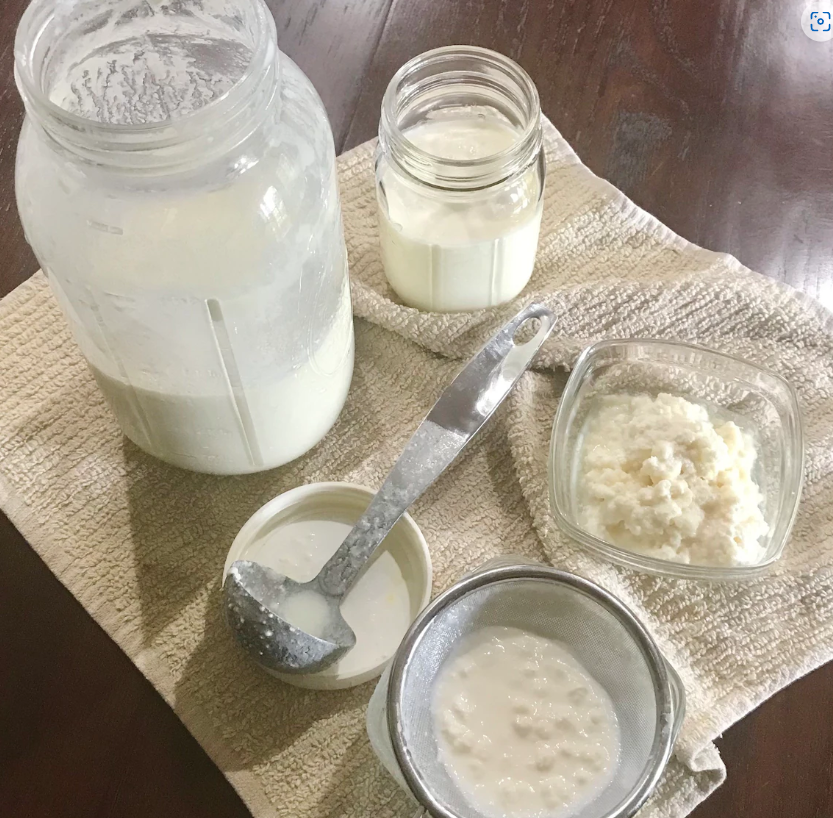
If your milk kefir has developed a strong yeasty flavor, there are several steps you can take to correct it:
- Strain and Rinse: Strain the kefir grains from the finished kefir using a plastic or stainless steel mesh strainer. Rinse the grains thoroughly with cool distilled water to remove excess yeast and lactose. (Never use tap water! It can damage your grains)
- Shorten Fermentation Time: Reduce the fermentation time to prevent the yeast from overdeveloping. Start by fermenting the kefir for a shorter duration, such as 12-24 hours, and adjust as needed based on taste.
- Change Fermentation Temperature: Adjust the fermentation temperature if possible. Yeast tends to thrive in warmer environments, so fermenting at a slightly cooler temperature may help reduce yeast growth. However, ensure the temperature remains within the optimal range for kefir fermentation, typically between 68°F to 78°F (20°C to 26°C).
- Increase Milk-to-Grain Ratio: Increase the ratio of milk to kefir grains. This dilutes the yeast concentration and reduces the likelihood of over-fermentation. Add more milk compared to the amount of kefir grains you are using.
- Aerate During Fermentation: Stir the kefir gently during fermentation to incorporate oxygen, which can help control yeast growth. Be careful not to disturb the kefir grains too much, as excessive agitation can damage them.
- Use Fresh Milk: Ensure you’re using fresh, high-quality milk. Raw milk is absolutely the best in correcting this issue. Avoid using ultra-pasteurized or UHT (ultra-high temperature) pasteurized milk, as it does not support optimal kefir fermentation and will contribute to yeasty flavors.
- Secondary Fermentation: After straining the kefir grains, you can opt for a secondary fermentation with flavorings like fruits or herbs. This can help mask any remaining yeasty taste with additional flavors.
- Ferment in the Refrigerator: Ferment kefir in the refrigerator for 24-72 hours, then take out and stain to start a new batch. This slows down fermentation and yeast growth, allowing the healthy bacteria to catch up and rebalance the grain colony. This can help preserve the flavor and reduce the yeasty taste over time.
By implementing these steps, you should be able to reduce the yeasty flavor in your milk kefir and achieve a more balanced taste. Remember that kefir fermentation can be somewhat variable, so it may require some experimentation to find the perfect balance for your taste preferences.
If you still have questions or need more help I have an in-depth guide and also offer 1-on-1 chat coaching!


